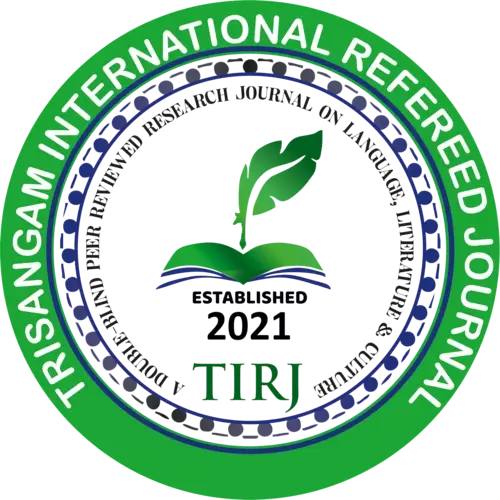Published Paper Details:
An analysis of the use of ‘ac’ sandhi in the sutras as found in Paṇinīya Vyākaraṇam and Supadma-Vyākaraṇam of padmanābhadatta
DIPANJAN CHAKRABORTY
Supadma-Vyākaraṇa, Pāṇinīya Vyākaraṇa, Ac Sandhi.
Vyākaraṇam is an important part of Vedāñga. In Chāndogya Upaniṣada Vedāñga is called “Vedānāṃ vedaḥ” (7/1/2). Acharya Panini is the brightest star in the studies of Sanskrit Vyākaraṇam. In Rarh Bengal, Supadma - Vyākaraṇam, written by PadmanabhaDatta is one of the Vyākaraṇam studies that is different from Panini’s though based on his ‘Astādhyāyī Vyākaraṇam’. Supadma-Vyākaraṇam was written in 12th century A.D. In some cases, Supadma-Vyākaraṇam, seems to be just a simplified interpretation of some sūtras of Panini’s ‘Astādhyāyī Vyākaraṇam’. This paper presents a comparative study of ‘Ac sandhi’ sutras as interpreted by Panini in his Astādhyāyī and Padmanabhadatta in his Supadma - Vyākaraṇam.
Panini in his Astādhyāyī gives the sutra “Akaḥ savarṇe dīrghaḥ” (6/1/101). Padmanabha follows him in interpreting this sūtra without differing from him in any way. Padmanabha’s sūtra in Supadma-Vyākaraṇam is “Akaḥ savarṇe dīrghaḥ” (1/2/2). The both sūtras are the same in form and meaning. Both the sūtras mean that if a ‘savarna’ follows ak (a-i-u-ri-li), then in the place of ak there will be ‘dīrgha ekādeśaḥ’. That means, if an ‘ak’ follows another ‘ak’, both of them will merge and be changed into a single ‘dīrgha swar’. For example ‘danḍāgram’. Here danḍa + agram, the last ‘a’ swar of ‘danḍa’ and ‘a’ swar of ‘agram’, becomes ‘ā’ of ‘danḍāgram’. Again, Panini in his Astādhyāyī has written two sūtras “Va supyāpiśaleḥ” (6/1/92) and “Eñi pararūpam” (6/1/94). But Padmanabhadutta has merged the two sūtras into a single one, in his Supadma-Vyākaraṇam, “Va supa eñādeśca” (1/2/11).
Padmanabha has also followed vārtikkāra Kātyāyana. But there are also independent interpretations of the original source. In Pāṇinīya Vyākaranam, we get “śakandhwadiṣu pararūpam vācyam” (vārtika 3632). Padmanabha follows this, and states “śakāderandhwādau” (1/2/24). They are different in form and meaning. Padmanabha has denied ‘Pararūpa ekādeśa’ totally. He says, if words like Śakandhu, follows another word, then the ‘a’ swara of the Ka sound in śaka, lopas. Example- Śakandhu. In Pāṇinīya Vyākarana, Vārtikkāra Kātyāyana “Śakandhwādiṣu pararūpam vācyam”, this vārtika is interpreted as, Śakandhu like words if is at the end of a word, then śaka like words ‘a’ swara as in ka of śaka becomes ‘pararūpa ekādeśa’. For example śaka + andhu= śakandhu.
To conclude, Padmanabhadatta has followed Panini in some cases, differed from him, in some other cases, and has independently given his statements in some other cases, in his Supadma-Vyākaraṇam. The main aim of this paper is to comparatively analyse the ac sandhi of Panini and Padmanabha.
Journal : TRISANGAM INTERNATIONAL REFEREED JOURNAL
Paper ID : tirj/January23/article-26
Page No : 238-244
Published In :Volume 3, Issue 1
DOI (Digital Object Identifier) :
E ISSN : 2583-0848


 .
.